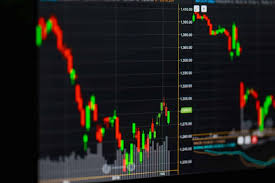
The Ultimate Guide to Forex Currency Trading Online
Forex currency trading online has gained immense popularity over the past few years, becoming a favored investment option for both beginners and experts alike. With the rise of technology and online trading platforms, individuals now have the ability to trade currencies from the comfort of their own homes. Moreover, the allure of potential profits draws many into this dynamic market. In this article, we will explore various aspects of forex trading, including strategies, tools, and tips that can help traders effectively navigate this financial domain. If you’re interested in maximizing your trading experience, consider exploring forex currency trading online Best Trading Apps that can offer enhanced functionality and user experience.
Understanding Forex Trading
Forex, or foreign exchange, is the largest financial market in the world, where currencies are traded. Unlike stock markets, which operate on an exchange, forex trading occurs over-the-counter (OTC) between parties. The market is open 24 hours a day during weekdays, allowing traders to engage in trading at any time that suits them. The key to successful forex trading lies in understanding the factors that influence currency values, which include economic indicators, geopolitical events, and market sentiment.
Key Terminology in Forex Trading
Before diving into trading, it is crucial to familiarize yourself with some key terminologies used in the forex market:
- Currency Pair: Currencies are traded in pairs (e.g., EUR/USD), where the first currency is the base currency and the second is the quote currency.
- Pip: A pip is the smallest price movement that can occur in the forex market, often representing a one-digit movement in the fourth decimal place.
- Leverage: This allows traders to control a larger position than they have in their trading account, potentially magnifying profits (or losses).
- Spread: The difference between the bid price and the ask price of a currency pair.
Types of Forex Trading Strategies
There are various strategies that traders use to make informed decisions in the forex market. Let’s explore some popular strategies:
1. Day Trading
Day trading involves buying and selling currency pairs within the same trading day. Traders aim to capitalize on small price movements and often rely on technical analysis and charts for decision-making. It requires a keen eye for market trends and the ability to make quick decisions.
2. Swing Trading

Swing trading focuses on capturing price moves over a few days to weeks. This strategy is ideal for those who cannot dedicate the entire day to trading. Swing traders often utilize a mix of technical and fundamental analyses to identify entry and exit points.
3. Scalping
Scalping is a high-frequency trading strategy where traders make quick trades that last from seconds to minutes. The goal is to profit from small price movements. Scalpers need to be quick and have a strong understanding of technical indicators.
4. Position Trading
Position trading is a long-term strategy where traders hold positions for weeks, months, or even years. This approach is less stressful and relies more on fundamental analysis, focusing on long-term economic trends.
Essential Tools for Forex Trading
Successful forex trading requires the right set of tools. Here are some tools that can provide significant advantages:
- Trading Platforms: These are software applications that allow traders to execute trades and manage their accounts. Popular platforms include MetaTrader 4 and MetaTrader 5.
- Charting Software: Visual representation of price movements is critical for analysis. Tools like TradingView can help traders view charts and use indicators effectively.
- News Feeds: Staying updated with relevant news and economic data is important. Many trading platforms provide real-time news feeds to help traders make informed decisions.
- Risk Management Tools: Tools such as stop-loss and take-profit orders are essential to manage risk effectively in the volatile forex market.
Risk Management in Forex Trading
Risk management is a crucial aspect of forex trading. Even the most skilled trader cannot avoid losses entirely, but effective risk management can help mitigate potential damages. Here are some strategies to manage risk:
- Position Sizing: Determine how much capital to trade based on your total account balance and risk tolerance.
- Stop-Loss Orders: Setting stop-loss orders can protect your investment by automatically closing a trade when it reaches a certain loss level.
- Diversification: Avoid putting all your capital into one currency pair; diversify your trades to spread risk.
- Emotional Discipline: Develop a trading plan and stick to it, avoiding emotional decision-making which can lead to losses.
Conclusion
Forex currency trading online presents both opportunities and challenges. By understanding the market, familiarizing yourself with key strategies, utilizing essential tools, and practicing effective risk management, you can enhance your trading experience and work towards your financial goals. The key is to remain patient, continually educate yourself, and adapt to the ever-changing market conditions. As you embark on your trading journey, remember that success does not come overnight—consistent effort and a disciplined approach are crucial to mastering forex trading.




Leave a Reply